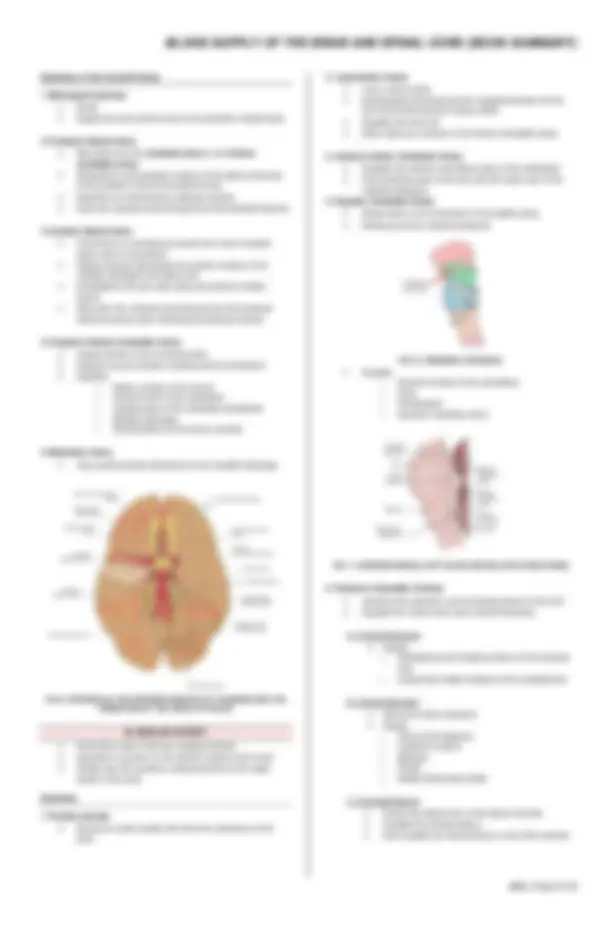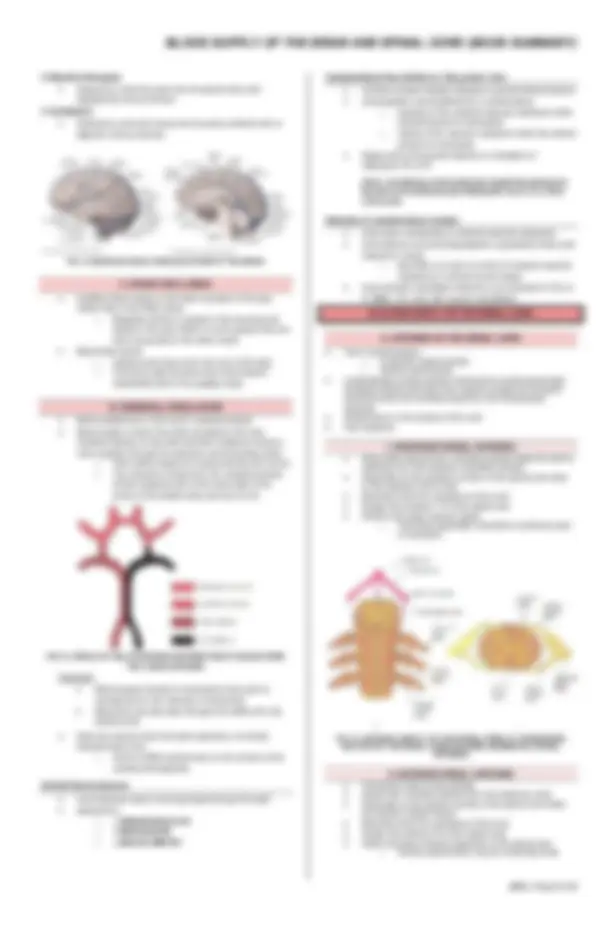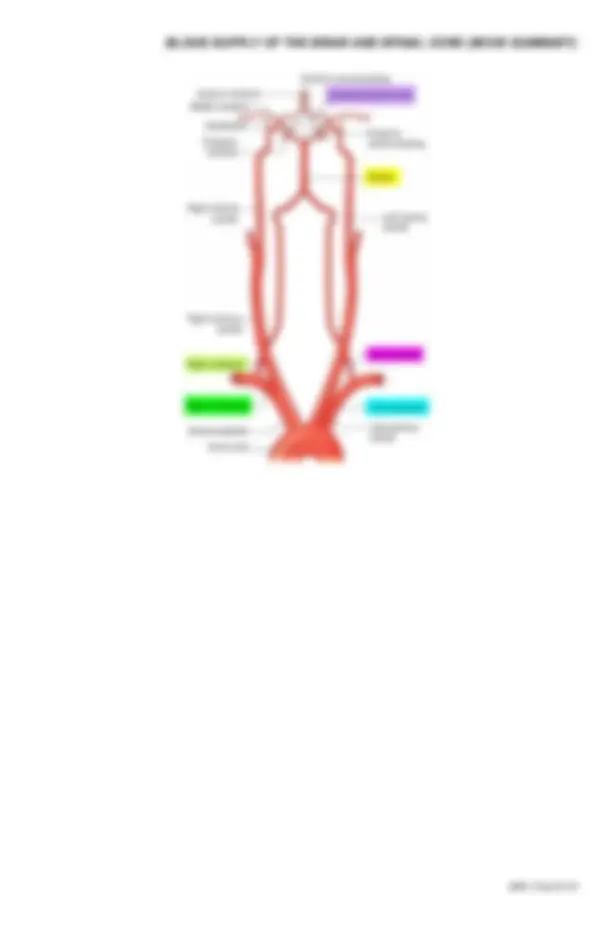






Study with the several resources on Docsity

Earn points by helping other students or get them with a premium plan


Prepare for your exams
Study with the several resources on Docsity

Earn points to download
Earn points by helping other students or get them with a premium plan
Community
Ask the community for help and clear up your study doubts
Discover the best universities in your country according to Docsity users
Free resources
Download our free guides on studying techniques, anxiety management strategies, and thesis advice from Docsity tutors
Reviewer based on snell's neuroanatomy
Typology: Summaries

Limited-time offer
Uploaded on 08/19/2020
5
(3)7 documents
1 / 8

This page cannot be seen from the preview
Don't miss anything!






On special offer
Cerebrovascular accidents (stroke) – remain the third leading cause of morbidity and death in the United States Internal capsule
The internal capsule is a white matter structure situated in the inferomedial part of each cerebral hemisphere of the brain. FIG 5. INTERNAL CAPSULE ANATOMY The lentiform nucleus lies beneath the insula. It is said to resemble a lens (Latin: lentiform, lens-shaped) but is best regarded as a cone with the base underlying the insula and a blunt apex pointing towards the midline. FIG 6. LENTIFORM NUCLEUS AND RELATED STRUCTURES
5. Middle Cerebral Artery - Largest branch of the ICA - Runs laterally in the lateral cerebral sulcus - Supplies all the motor area except the “leg area” (see cortical branches below) FIG 7. CORONAL SECTION OF THE CEREBRAL HEMISPHERES SHOWING THE ARTERIAL SUPPLY TO THE DEEP CEREBRAL STRUCTURES FROM THE MIDDLE CEREBRAL ARTERY A. Cortical branches
FIG 12. AREAS SUPPLIED BY CEREBRAL ARTERIES; BLUE: ANT CEREBRAL ARTERY; PINK: MIDDLE CEREBRAL ARTERY; BROWN: POSTERIOR CEREBRAL ARTERY IV. CIRCLE OF WILLIS
3. Medulla Oblongata - Drained by veins that open into the spinal veins and neighboring venous sinuses 4. Cerebellum - Drained by veins that empty into the great cerebral vein or adjacent venous sinuses FIG 14. MORE DETAILED VENOUS SYSTEM OF THE BRAIN C. BRAIN CAPILLARIES - Capillary blood supply to the brain is greater in the gray matter than in the white matter o Metabolic activity is greater in the neuronal cell bodies in the gray matter is much greater than the nerve processes in the white matter - Blood-brain barrier o Isolates brain tissue from the rest of the body o Formed by tight junctions that exist between endothelial cells in the capillary beds D. CEREBRAL CIRCULATION - Brain supplied from 2 ICA and 2 vertebral arteries - Blood supply to half of the brain provided by ICA and vertebral arteries on that side and their respective streams come together through the posterior communicating artery o Point where pressure is equal and they do not mix o Two streams of blood from the vertebral arteries remain separate and on the same side of the lumen of the basilar artery and do not mix FIG 15. CIRCLE OF WILLIS SHOWING DISTRIBUTION OF BLOOD FROM THE 4 MAIN ARTERIES Occlusion - Blood passes forward or backward at that point to compensate for the reduction of blood flow - Blood flow can also pass through the midline thru the arterial circle - Once the arteries enter the brain substance, no further anastomoses occur o Circle of Willis anastomose on the surface of the cerebral hemispheres Arterial blood pressure - most important factor in forcing blood through the brain - opposed by: o ↑ intracranial pressure o ↑ blood viscosity o ↓ vascular diameter Cerebral blood flow (50-60 mL/100 g brain/ min) - remains constant despite changes in general blood pressure - autoregulation accomplished by a compensatory: o lowering of the cerebral vascular resistance when arterial pressure is decreased o raising of the vascular resistance when the arterial pressure is increased - Measured by intracarotid injection or inhalation of radioactive Xe or Kr NOTE: AUTOREGULATION DOES NOT MAINTAIN ADEQUATE BLOOD FLOW WHEN BLOOD PRESSURE FALLS TO A VERY LOW LEVEL Diameter of cerebral blood vessels - main factor contributing to cerebral vascular resistance - innervated by cervical postganglionic sympathetic fibers and respond to norepi o play little to no part in control of cerebral vascular resistance in normal human beings - most powerful vasodilator influence is an increase in CO 2 or H+^ conc, ↓ O 2 conc also causes vasodilation III. BLOOD SUPPLY OF THE SPINAL CORD A. ARTERIES OF THE SPINAL CORD - From 3 small arteries: o 2 posterior spinal arteries o Anterior spinal artery - Longitudinally running arteries reinforced by small segmentally arranged arteries that arise from arteries outside the vertebral canal and entre the vertebral canal thru the intravertebral foramina - Anastomose on the surface of the cord - Has variations I. POSTERIOR SPINAL ARTERIES - Arise either directly from vertebral arteries inside the skull or indirectly from the posterior cerebellar arteries - Descends on the posterior surface of the spinal cord close to the posterior nerve roots - Branches enter the substance of the cord - Supply the posterior 1/3 of the spinal cord - Small in the upper thoracic region o First three especially vulnerable to ischemia (due to occlusion) FIG 16. ARTERIAL SUPPLY OF THE SPINAL CORD; B. TRANSVERSE SECTION OF THE SPINAL CORD SHOWING SEGMENTAL SPINAL ARTERIES II. ANTERIOR SPINAL ARTERIES - Formed by union of two arteries - Arises from vertebral arteries from the inside the skull - Descends on the anterior surface of the spinal cord within the anterior median fissure - Branches enter the substance of the cord - Supply the anterior 2/3 of the spinal cord - Upper and lower thoracic segments of the spinal cord o Anterior spinal artery may be extremely small